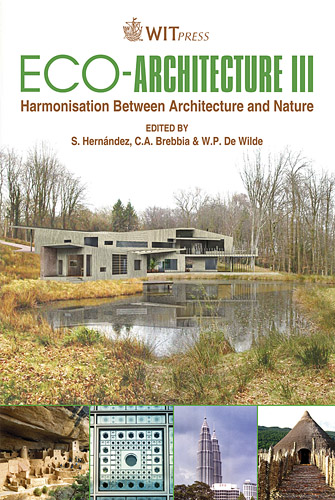Quantifying Eco-architecture
Price
Free (open access)
Transaction
Volume
128
Pages
12
Page Range
333 - 344
Published
2010
Size
341 kb
Paper DOI
10.2495/ARC100281
Copyright
WIT Press
Author(s)
R. E. Smith
Abstract
Qualitative methods of evaluation predominate in designing for green building. Although accessible for architects, this paper makes a case for data driven quantification to aid in fostering change in finding a balance between the triple bottom line of sustainability: environment, society and economics. The paper proposes three functionalities that should be considered by the design team, including architects and engineers, in order to develop a unique quantification method and select appropriate tools, including subject, scale and scope. Challenges are discussed and suggestions are proposed for the future of method and tool development for sustainable design processes. Keywords: quantification, green building, life-cycle assessment, simulation. 1 Introduction A key factor in quantifying sustainability in design and building includes not only environmental issues, but economic, social and cultural considerations as Bruntland (1987) suggest, must assess sustainability from the perspective of both natural and human capital [3]. The need for quantifiable data related to sustainable design of buildings is therefore necessary in order to make effective decisions regarding the future of resource use. Data is also necessary to convince decision makers of the need for regulatory changes. Quantification is a key component in order to foster real change in public attitudes and actions with regard to sustainability. In addition, as sustainable practices, including green building, continue to progress in different sectors of the world economy, it will be necessary that an effective balance is found between social, economic and environmental concerns.
Keywords
quantification, green building, life-cycle assessment, simulation





